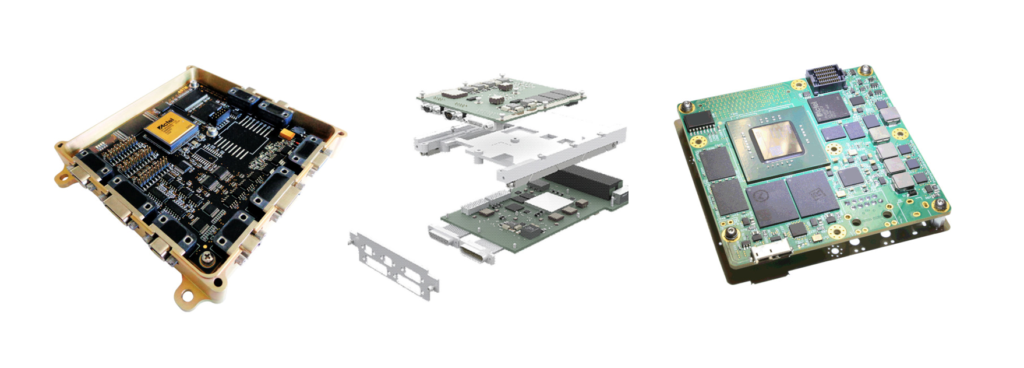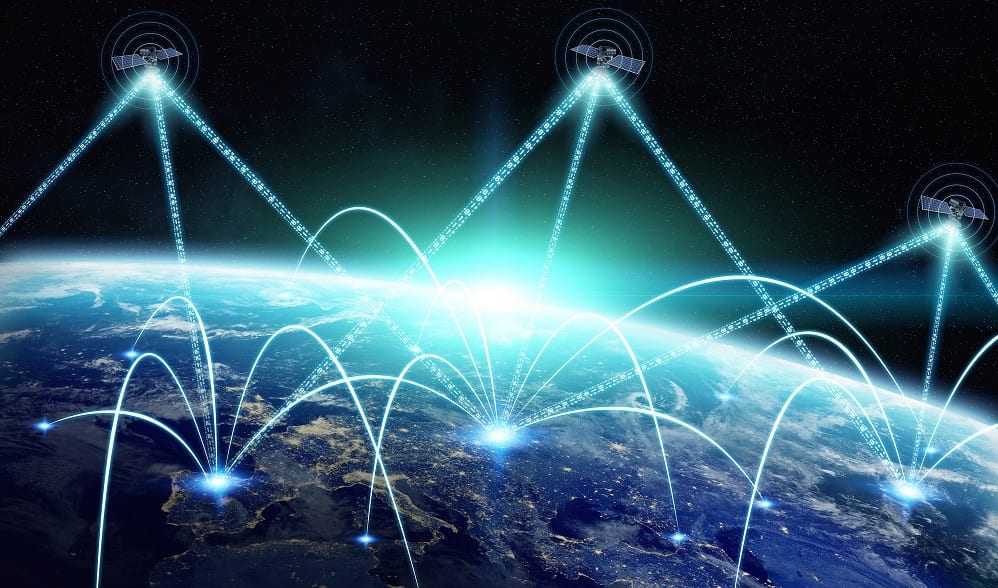In the space industry the supply chain is complex and interdependent, with many different stakeholders involved. These include government agencies, private companies, research institutions, and individual contractors, all of whom may play a critical role in the success of any given mission.
In virtually every mission or service’s development, early engagement with possible product and service providers (not to mention funders and regulators) is recommended. Therefore, sometimes it can help to take a step back and consider all of the different key players that may be involved.
This article provides a quick overview of the different categories of suppliers and organizations acting in the space industry. For each category a few example suppliers have been identified – but please note that many of these companies span more than one category in their work.
We’ll be adding more detail to this mapping over time so please check back when you can!
Electronic component providers: companies that manufacture electronic components specifically designed for space applications, such as radiation-hardened components or high-reliability parts. Examples: Texas Instruments, BAE Systems, and Microchip Technology.
Material and fuel manufacturers: manufacturers of propellant, optical/thermal coatings, radiation shields, and other space-grade materials that are used in subsystems and components in orbit. Examples: ACM Coatings GmbH, Messer LLC, and Becq.
Subsystem manufacturers: companies that specialize in the design, development, and production of subsystems for satellite and spacecraft integration. Examples: CubeSpace, Tensor Tech, and Veoware.

Payload manufacturers: companies that design, develop, and produce specialized equipment or instruments to be carried on satellites. Examples: Ball Aerospace, L3Harris Technologies, and Teledyne Technologies.
Satellite manufacturers: companies that design, develop, and manufacture satellites for various purposes. Examples: Kongsberg NanoAvionics, Northrop Grumman, and Thales Alenia Space.
Testing facilities and equipment providers: organizations and businesses that offer testing equipment (for sale or rental) and/or access to their own facilities to run analysis and qualification procedures such as Thermal Vacuum Chamber (TVAC) tests. Examples: NPC Spacemind, Exobotics, and Nanovac AB.
Ground equipment manufacturers: companies that develop and produce ground-based equipment for satellite communication and tracking. Examples: EnduroSat, Berlin Space Technologies, and Alén Space.
Ground station owners: organizations that own and operate ground stations responsible for tracking, communicating with, and controlling satellites, as well as receiving and processing satellite data. Examples: Leaf Space, Dhruva Space, and KSAT.
Logistics companies: businesses that offer specialist shipping products (e.g. bespoke satellite or subsystem containers) and services for space equipment in order to transport hardware from manufacturers to integration, testing, and launch sites. Examples: Azimut Space, Pelican Products, and EPS Logistics,
Software developers: companies that create software solutions for satellite control, data processing, and mission planning, as well as other space-related applications. Epsilon3, Vyoma, and KP Labs.
Launch service providers: companies responsible for delivering satellites and payloads into orbit using launch vehicles. Examples: SpaceX, Space BD, and Arianespace.
Consultants and service providers: businesses offering expert advice, support, manpower, and other resources for all aspects of space missions or commercial service development, from design and engineering to integration and operation. Examples: Cloudflight, STM, and EOSOL Group.
Regulators: government and international entities responsible for overseeing, licensing, and regulating activities in the space sector to ensure safety, security, and compliance with international laws and treaties. Examples: Federal Communications Commission (FCC) in the USA, the Civil Aviation Authority (CAA) in the UK, and the International Telecommunication Union (ITU) at the international level.

Satellite operators: companies that manage and control satellite operations, including communications, monitoring, and data transmission services. Examples: Planet, Eutelsat, and Iridium.
Space agencies: government organizations responsible for the planning, coordination, and execution of national space programs. Examples: NASA, ESA, and JAXA.
Research institutions: academic and research organizations that conduct space-related research, develop technologies, and contribute to advancements in the space sector. Examples: MIT, Cape Peninsula University of Technology (CPUT), and the Institute of Space Science.
End users: organizations or individuals that utilize space-based services, such as satellite communications, Earth Observation, and navigation. Examples: telecommunications companies (e.g., AT&T, Verizon), government agencies (e.g., NOAA, USGS), and private companies relying on satellite data (e.g., agriculture, logistics).
This is just a high-level picture of the ecosystem today. In reality, there’s more nuance, sub-categorization, and cross-categorization of individual companies and organizations than this (which we’ll explore in future articles). But if you need a handy reference to think about the entire supply chain – this should do the job!
If you would like some help contacting or procuring from any of these organizations (or anyone else across the global space industry) then we can help. Click here to find out more about our free tender service for space engineers.
How the space supply chain is unique compared to other industries
In many ways, the space industry supply chain is inherently different from those in other industries.
Firstly, the space industry requires extremely high levels of precision and reliability in its components and systems. For example, a small flaw or error in a satellite component could result in significant financial and operational losses, as well as endangering human lives.
You can’t fix a piece of hardware once its in orbit (in the vast majority of cases) so quality control and testing processes are often much more rigorous and time-consuming than in other industries.
Secondly, the space industry involves a large number of stakeholders, including government agencies, private companies, and international partners. This creates complex legal and regulatory frameworks that must be navigated, adding an additional layer of complexity to the supply chain.
The nature of some applications also adds sensitivity and complexity – particularly in military or surveillance domains.
Thirdly, the space industry is highly dependent on international cooperation, as many countries have their own space programs and contribute to global space exploration efforts. This means that the supply chain must account for varying cultural norms, business practices, and legal requirements across different countries and regions.
Space services can be created with collaborators from several different countries, launch from another, undergo operational management by teams based in other countries, and then connect to the ground and provide a service for end-users in yet more territories. All of these locations may have unique legislation that needs to be navigated.
Finally, the space industry involves cutting-edge technologies and materials that may not yet be widely available or tested in other industries. This means that the supply chain must be flexible and adaptable to accommodate rapid changes in technology and innovation, while also balancing long mission development and testing timelines and finite launch windows.
Overall, the space industry supply chain is unique in its complexity, precision, and international nature, and requires specialized expertise and coordination to ensure successful operations. However, there are many similarities with different specific aspects of other sectors that are useful to think about to understand how the supply ecosystem works.

Industry sectors that are similar to space
Here are four examples of other industries that have some characteristics or operations similar to the space supply chain:
The aerospace industry – the aerospace industry obviously shares many similarities with space. Both industries involve designing and manufacturing high-tech systems and components that must meet strict safety and quality standards. They both also require a high level of expertise in engineering, materials science, and other technical disciplines. As the space industry evolves to (hopefully) incorporate more human spaceflight, the aerospace industry will be a great source of insights and ideas to keep people safe.
The medical devices and pharmaceutical industry – like the space industry, the medical devices sector involves developing and manufacturing products that must meet rigorous safety and regulatory requirements. Both industries also require precision manufacturing processes and specialized testing to ensure product efficacy and safety.
In addition, the high cost of developing new innovation is a characteristic shared by both supply chains – consider a large-scale medical trial and an in-orbit demonstration mission for example!
The defense industry – while it obviously directly overlaps in many applications, the defense industry also shares some similarities with the space industry in terrestrial, maritime, and airspace domains.
Both areas also require cutting-edge technologies and innovation to stay ahead of potential threats and involve complex supply chains that are affected by a wide variety of government regulations and international partnerships.
The renewable energy industry: the renewable energy industry also shares some similarities with the space industry, as both require a focus on innovation and technology to solve complex problems. Both industries also require a long-term perspective, as the benefits of investment may not be immediately realized, and both have significant potential to contribute to global sustainability efforts.
Help navigating the global space industry
As you can see, the complex and interconnected nature of the global space supply chain, combined with the rapid pace of change in the industry, is making it difficult for engineers to find the right products and services for their needs.
That’s where we come in. The satsearch marketplace features structured, organized, and detailed information on thousands of suppliers, products, and services from around the world.
We work with suppliers all around the world to make this information open and accessible for use in trade studies and mission development processes. We host datasheets, CAD models, Interface Control Documents (ICDs), and other resources, which are all freely available to download (without an email address or login). Please click here to browse the site and find the right solutions for your mission or service.
We also offer free procurement support for missions at all stages of development. We can give you advice on any aspect of your trade study, or assist in managing the entire process, by leveraging our global networks of contacts at companies and organizations around the world.
We can handle multiple supplier conversations for you, while keeping your information anonymous if you prefer, and reduce the time it takes to get answers from suppliers from weeks down to days.
To try out this free service, simply share your basic requirements with us at this page, and we’ll get back to you ASAP.
